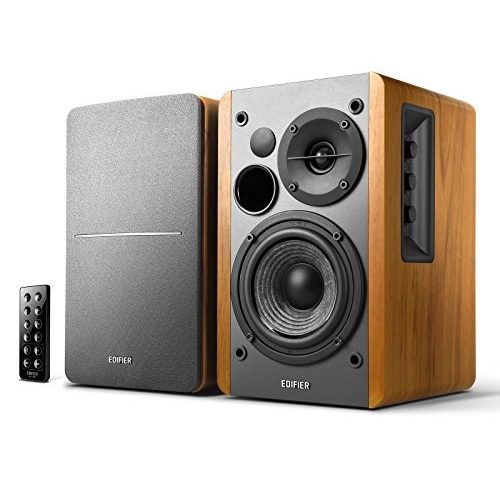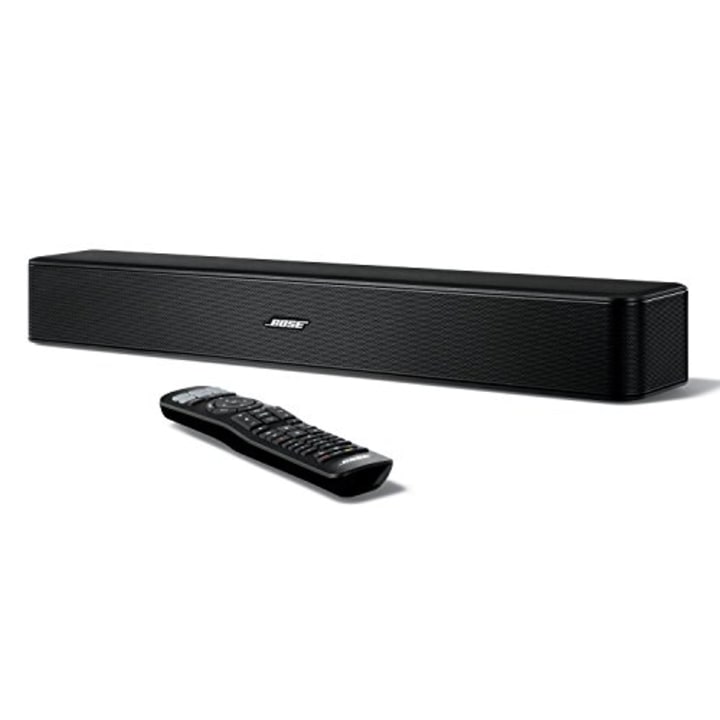Bookshelf speaker prices and brand names aren’t everything
The choices then come down to budget, available space at home and whatever devices or combination of devices you’ll be using speakers for — turntable, smartphone, laptop, TV or full-on stereo system. “Audio is not an area where you can buy yourself out of a problem,” says Eric Gould, owner of SoundLux Audio in Miami, Florida, which specializes in high-end home entertainment systems. “Super-expensive is not always better.”
Likewise, not being up on the best-known or hottest speaker brands isn’t necessarily a problem for somebody weighing a purchase. “If you don’t know much about brand or price, those won’t influence you,” said Braxton Boren, a professor of audio technology at American University in Washington, D.C. “So you can help yourself out by first doing a ‘blind’ test and seeing what you like. You might be surprised once you find out which brand is which!”
How to find the best home speakers for you
Perhaps most importantly, you want to decide what you’ll be listening to and through what devices — that’ll help you determine whether you want passive or active speaker.
- Passive speakers need to be connected to an amplifier using stereo cables
- Active, or self-powered, speakers include a built-in amplifier and plug into a standard electrical outlet.
Let our news meet your inbox. The news and stories that matters, delivered weekday mornings.
Speakers that are both self-powered and wireless — as in models that are Wi-Fi or Bluetooth-capable — can handle just about any device you throw at them, although not necessarily all at once.
Listen closely
Our hearing naturally degrades over time — often faster if we don’t protect it from loud noises, says Boren. So don’t assume your ear is perfect; try instead to find speakers that you’re comfortable with. Gould recommends setting aside time for in-store or showroom listening to various speakers. “It’s easy to be wowed by a piece of equipment but the wow factor can go away pretty quickly,” he says. “After listening to a speaker or a component for 20 minutes, if you’re still eager about it, then you’re on to something.”
Place your speakers on a pedestal, figuratively speaking
The listening environment at home is another big consideration, unless you’re open to retrofitting your furniture for better sound. “They want the speakers to adjust to whatever situation they have,” notes Maria Elisa Ayerbe-Barona, an audio engineer who has worked on multiple Grammy- and Latin-Grammy nominated albums, adding that’s hard to pull off.
Good speaker placement is underrated, echoes AU’s Boren. “If you sink money into a speaker because of its flat frequency response but then place it in front of your hard plaster walls to emphasize the chic modernist design of your home, you might as well have saved money by getting cheaper speakers!” he says.
Use bookshelves or furniture. Sound bouncing off that flat, hard surface will cancel out frequencies and make whatever’s playing sound worse. “It’s better to put something absorbent (like furniture) or diffusive (like a bookshelf) behind the speakers so that you don’t have a close reflection right behind the direct sound,” he says.
Find the right angle. Boren also said stereo speakers sound best when they’re angled: For speakers facing the listener, the general guideline is placing and pointing them at 30-degree angles on either side of the center line that marks the listening spot, where you’d be sitting or standing. “Many people suggest a somewhat smaller angle — perhaps 25 degrees instead — but this also depends on the size of the ‘sweet spot’ you want for the listening area,” he says. “If you’re sharing the experience from a couch, a bit wider is better. If it’s all optimized for a single seat, then smaller might be preferable.”
Best home audio speakers
Here are some of the leading home speakers to consider right now, based on guidance from the experts we consulted.
1. Edifier R1280DB Powered Bluetooth Speakers
These sturdy bookshelf speakers, which plug into a standard wall outlet and are less than 10 inches tall, play music from multiple sources with surprising clarity and range at reasonable volume considering their modest size, power (42 Watts total) and price. The classic two-speaker stereo setup is still a mainstay of a lot of in-home listening, partly because that’s how most music is recorded, “with the stereo field in mind,” explains Andrew Yeomanson, a Miami-based DJ, producer and bandleader who also operates a recording studio. With built-in volume and tone controls, this version adds wireless Bluetooth compatibility to Edifier’s popular, price-leading R1280 bookshelf speakers, making this self-powered, no-amp-needed pair as compatible with a smartphone or iPad as it is with a Blu-ray player or self-powered turntable.
2. Audioengine HD6 Wireless Speaker System
At nearly a foot tall, Audioengine’s handsome HD6 wireless speakers stand at the upper end of the bookshelf speakers category. Experts note that active speakers that play wirelessly don’t transmit recorded sound quite as faithfully as passive, wired speakers. It’s one reason sound engineers like Ayerbe-Barona still use traditional, cabled speakers at work. But the gap is closing. “One of the big breakthroughs of the past 20 years has been the availability of cheaper digital signal processing (DSP) at every step of the process,” says Boren of American University. “As a result, there is a lot that circuit designers can do on their end to compensate for the losses in bandwidth from wireless transmission.”
3. Martin Logan Motion 4i Bookshelf Speaker (Single)
This sculptural-looking mini speaker delivers deep sound for voices and instruments alike, allowing it to fall into the elevated category of bookshelf-sized speakers. Good reproduction of the human voice is an important tell for speaker quality. “To get that midrange where the human voice is, and to get it realistic, that’s where the challenge is,” says Gould of SoundLux. The Martin Logan Motion 4i speaker is passive, meaning it requires an amplifier and traditional speaker cable to play. But for listeners who want power and fidelity in a slim and aesthetically pleasing form for a shelf, stand or wall mount, it can be ideal.
4. Sonos One Two-Room Speaker Set
Arguably the best-known maker of wireless smart speakers, 21st Century-born, digital-native Sonos is happy to sell its baseline One speaker as a single item, but also offers two as a slightly discounted matched set. Through Wi-Fi (but not Bluetooth), two Sonos Ones — each about the size of a mason jar — can wirelessly hook up to create bigger, room-filling stereo sound when you want it, and uncouple when you don’t. “They have almost adapted to any situation or room,” Ayerbe-Barona says of Sonos. The One is also voice-equipped with Google Assistant and Amazon Alexa, — if privacy is a concern, you can disable the voice control feature and just run the speakers from the Sonos smartphone app.
5. Bose Solo 5 TV Sound System
If space is tight and music listening has to share speaker time with television viewing, Bose’s Solo 5 sound bar offers an adaptable and affordable solution. Less than two feet wide, the Solo 5 has inputs for digital and analog devices. It’s not technically wireless, but there are workarounds: Boren has a Bose sound bar in his home connected to an Apple TV player. “This gives a good combination of powerful low-end for watching war movies, but also lets me easily have three different options for streaming music to the system when the TV is off (from the computer, phone or iPad),” he says.
More shopping guides and recommendations
Catch up on the latest from NBC Shopping guides and recommendations.
















